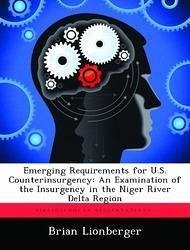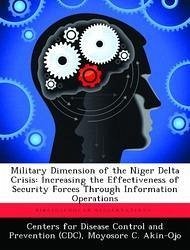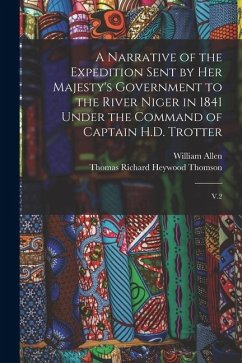Nicht lieferbar

Emerging Requirements for U.S. Counterinsurgency: An Examination of the Insurgency in the Niger River Delta Region
Versandkostenfrei!
Nicht lieferbar
Since early 2002, the U.S. military has relearned COIN at the tactical, operational and strategic levels of war for both special operations and conventional forces in order to meet the security and stability requirements of both Afghanistan and Iraq post major combat operations. While the U.S. military is now developing a comprehensive COIN strategy and practice suitable to the specific requirements of those theaters, variations of insurgency are growing, or are already established, in areas of the world critical to U.S. national security interests and which are wholly dissimilar from these ca...
Since early 2002, the U.S. military has relearned COIN at the tactical, operational and strategic levels of war for both special operations and conventional forces in order to meet the security and stability requirements of both Afghanistan and Iraq post major combat operations. While the U.S. military is now developing a comprehensive COIN strategy and practice suitable to the specific requirements of those theaters, variations of insurgency are growing, or are already established, in areas of the world critical to U.S. national security interests and which are wholly dissimilar from these campaigns. The evolving insurgency in the Niger River Delta region of Nigeria is and will continue to threaten U.S. national security interests in terms of regional political stability and access to strategic resources. This thesis proposes that the U.S. military's experiences from Afghanistan and Iraq, both at the tactical and operational levels, have not established an adequate skill set to overcome the challenges of COIN presented in the Niger River Delta and will require changes in service doctrine, organization, training, material, and leader development to prevail in this unique COIN environment. This work has been selected by scholars as being culturally important, and is part of the knowledge base of civilization as we know it. This work was reproduced from the original artifact, and remains as true to the original work as possible. Therefore, you will see the original copyright references, library stamps (as most of these works have been housed in our most important libraries around the world), and other notations in the work. This work is in the public domain in the United States of America, and possibly other nations. Within the United States, you may freely copy and distribute this work, as no entity (individual or corporate) has a copyright on the body of the work. As a reproduction of a historical artifact, this work may contain missing or blurred pages, poor pictures, errant marks, etc. Scholars believe, and we concur, that this work is important enough to be preserved, reproduced, and made generally available to the public. We appreciate your support of the preservation process, and thank you for being an important part of keeping this knowledge alive and relevant.













